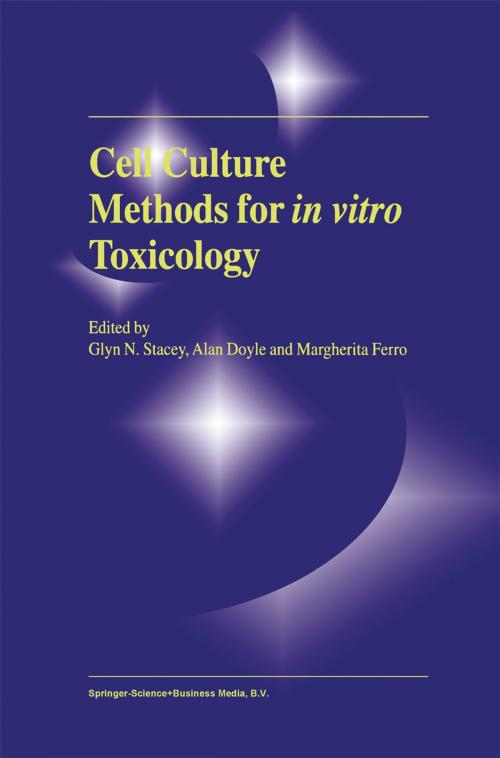Cell Culture Methods for In Vitro Toxicology
Nonfiction, Health & Well Being, Medical, Medical Science, Pharmacology, Science & Nature, Science, Biological Sciences, Zoology| Author: | ISBN: | 9789401709965 | |
| Publisher: | Springer Netherlands | Publication: | June 29, 2013 |
| Imprint: | Springer | Language: | English |
| Author: | |
| ISBN: | 9789401709965 |
| Publisher: | Springer Netherlands |
| Publication: | June 29, 2013 |
| Imprint: | Springer |
| Language: | English |
Cell Culture Methods for in vitro Toxicology introduces the reader to a range of techniques involved in the use of in vitro cell culture in toxicological studies. It deals with major cell types studied in the field of toxicology and will be useful for anyone wishing to start work with animal cell cultures or to refresh their knowledge relating to in vitro cell models. Fundamental chapters deal with the general biology of cytotoxicity and cell immortalisation these are key issues for in vitro systems addressing the `3Rs' principle. Up-to-date overviews deal with the use of cells from liver, brain and intestine. In addition, biochemical analysis of cell responses, biotransformation pathways in cells and recombinant approaches to the early detection of cell stress are also covered in detail.
Prominent features of in vitro technologies also include regulation, biosafety and standardisation. Dedicated chapters deal with these issues in a practical way in order to lead the reader to the right source of information. This book provides an up-to-date, informative and practical review of cell culture methods for in vitro toxicology. It will be of equal benefit to students and experienced toxicologists with little experience of in vitro cell culture.
Cell Culture Methods for in vitro Toxicology introduces the reader to a range of techniques involved in the use of in vitro cell culture in toxicological studies. It deals with major cell types studied in the field of toxicology and will be useful for anyone wishing to start work with animal cell cultures or to refresh their knowledge relating to in vitro cell models. Fundamental chapters deal with the general biology of cytotoxicity and cell immortalisation these are key issues for in vitro systems addressing the `3Rs' principle. Up-to-date overviews deal with the use of cells from liver, brain and intestine. In addition, biochemical analysis of cell responses, biotransformation pathways in cells and recombinant approaches to the early detection of cell stress are also covered in detail.
Prominent features of in vitro technologies also include regulation, biosafety and standardisation. Dedicated chapters deal with these issues in a practical way in order to lead the reader to the right source of information. This book provides an up-to-date, informative and practical review of cell culture methods for in vitro toxicology. It will be of equal benefit to students and experienced toxicologists with little experience of in vitro cell culture.















